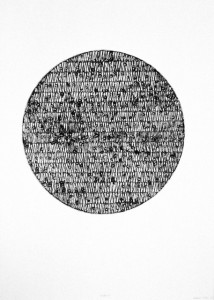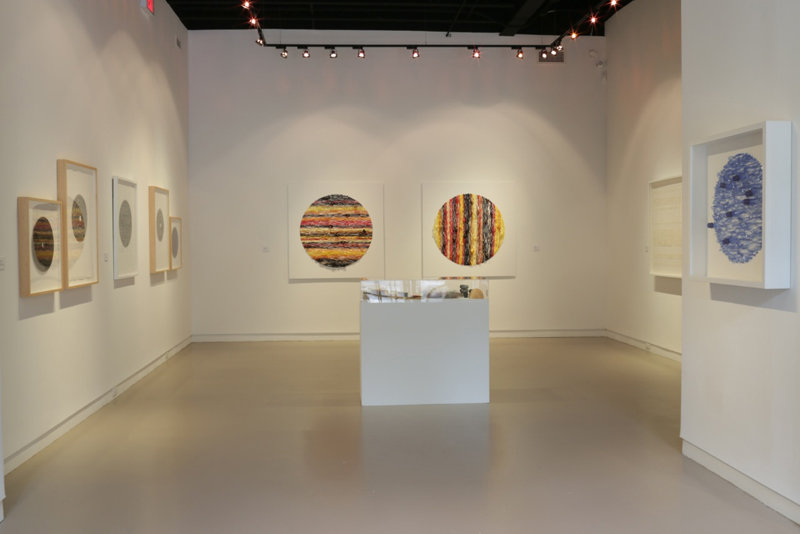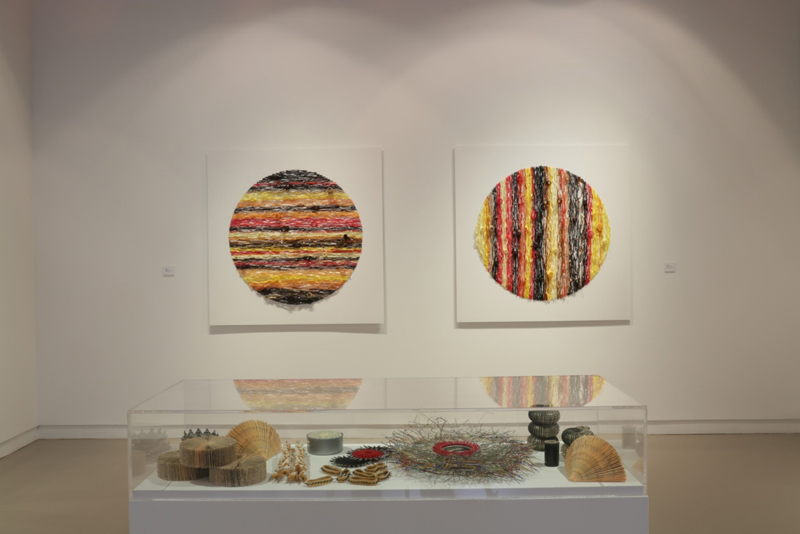Jérôme Fortin: An Overview
August 16 – September 8
 Jérôme Fortin was born in Joliette in 1971, he lives and works in Montreal.
Since 1996 he has had more than a twenty solo exhibitions including shows in Prague, Pretoria, Tokyo, Paris, Toronto and Montreal. His work has been presented in group exhibitions in Istanbul, Berlin, Bologna, Brussels, Paris, Cuba, Barcelona, Beijing and New York. Fortin has also actively participated in international artists’ residencies, notably at the World Financial Center Arts and Events (New York), la Fondation Christoph-Merian (Basel), Fonca (Mexico D.F.), la Cité internationale des arts (Paris), the Ludwig Foundation of Cuba (Havana) and Tokyo Wonder Site (Tokyo). In 2007 Fortin had a major solo exhibition at the Musée d’art contemporain de Montréal (MACM) and in 2004 he was a laureate of the City of Montreal’s Prix Pierre Ayot. His works can be found in several public collections including those of the Musée d’art contemporain de Montréal, the Musée national des beaux-arts du Quebec, the Musée de Joliette, the Pretoria Art Museum, the National Museum of China, the Bibliothèque et archives nationales du Québec, the Canada Council Art Bank, the City of Montreal, and in several major corporate and private collections worldwide.
Jérôme Fortin was born in Joliette in 1971, he lives and works in Montreal.
Since 1996 he has had more than a twenty solo exhibitions including shows in Prague, Pretoria, Tokyo, Paris, Toronto and Montreal. His work has been presented in group exhibitions in Istanbul, Berlin, Bologna, Brussels, Paris, Cuba, Barcelona, Beijing and New York. Fortin has also actively participated in international artists’ residencies, notably at the World Financial Center Arts and Events (New York), la Fondation Christoph-Merian (Basel), Fonca (Mexico D.F.), la Cité internationale des arts (Paris), the Ludwig Foundation of Cuba (Havana) and Tokyo Wonder Site (Tokyo). In 2007 Fortin had a major solo exhibition at the Musée d’art contemporain de Montréal (MACM) and in 2004 he was a laureate of the City of Montreal’s Prix Pierre Ayot. His works can be found in several public collections including those of the Musée d’art contemporain de Montréal, the Musée national des beaux-arts du Quebec, the Musée de Joliette, the Pretoria Art Museum, the National Museum of China, the Bibliothèque et archives nationales du Québec, the Canada Council Art Bank, the City of Montreal, and in several major corporate and private collections worldwide.
This exhibition will encompass works from his most renowned series including Bagatelle, Seascapes/Marines, Tondos, Écrans/Screens, Ostinatos.
On the Bagatelle series
With his sculpture-installations, Jérôme Fortin combines his work with cabinets of curiosities — the 17th century’s private museums — and the 20th and 21st centuries’ practice of mass consumption. Corks, plastic bottles, books, matches, nails, and tin cans are cunningly handled and assembled in several series of visual curiosities. Their colors, forms, textures, and volumes suggest the flowers, seashells, jewelry, and amulets once collected by the curious for their exotic flavour. The poetic, mysterious allure of Fortin’s sculptures sets aside the usual aspect of everyday objects so as to exalt in our contemporary gaze.
On Seascapes/Marines series
The Marines (Seascapes) series was developed in the northeastern part of Quebec (Saint-Jean-port-Joli) during the artist’s residency in 2001. ”Every day, I walked along the shoreline from the northeast to the town. I patiently gathered all the plastic bottles that the peak spring tides dumped onto the riverbank. The St. Lawrence River displayed an amazing presence. Some of my clearest insights came from watching the shifting waves and tides. At the Centre, I spent my evenings cutting up the multi-colored containers into long, thin strips. I stapled these plastic strips directly onto the walls of my workshop to make Tondos, a form that brings to mind portholes or the sea seen through a spyglass.. The plastic strips were densely lined up in layers to suggest a wave motion. The bottlenecks that appear here and there show the number of bottles that went into each seascape. Each work has its own plastic qualities, depending on the different textures, forms and colors of the bottles. For instance, certain transparencies produce an effect like the reflection of light on water.”
On the Tondo series
The series of prints presented was developed during a residency in the Spring 2003 at the Ateliers Graff. Inspired by his previous body of work Seascapes/Marines, these prints are collographs made from bands of shredded paper. This form of printing uses materials that are arranged in a collage form. Through the repetition of gestures involving folding, the motifs that emerge remind some times rosettes and at other times the agitated surface of the sea. Art, for Jérôme Fortin, is quite obviously an activity to which he devotes unstinting practice; and he does it with skilfulness that verges on magic. In his endless play with materials, printmaking in Fortin’s work is unexpected; his prints, moreover, renew the genre. From the outset, they intrigue us: we wonder about the underlying technique. Simple sheets of printed paper, generally taken from a single book, cut end-to-end and glued onto a round cardboard. While relatively uniform visually, they each have a personality. Here is an astounding investigation into variations of some motifs – variations on a theme, as musicians say. Tirelessly, though never tiring, Jérôme explores a whole range of textures, constructions evocative of Aztec or Inca drawings, of ancient writings, of plant or fabric. One can draw up a long list of associations, for the allusions are intricate. Before our eyes, a bouquet of nuances – greys, whites, blacks. Whether blurred or sharp, the series explores countless varieties of these hues, inviting our gaze to follow its meandering course. And yet, the objects that served as plates, the moulds, are as fascinating as the prints themselves. Distinguished by their colour and low relief, they are works in their own right. In truth, while dexterity plays an important role in the production of an art work, time and effort are also a factor. – text by Pascale Beaudet
On the Ostinatos series
Patiently, haunted by the series and repetition, Jérôme Fortin cuts and folds a multitude of sheets of paper collected on his travels. Assembled into concentric circles and glued together, they are the silent material of thirty circular matrices and thirty prints the diameter of a 33 1/3 vinyl record We have the pleasure to present a number of this prints in this exhibition. The fruit of the artist Jérôme Fortin’s and the curator Eric Mattson’s shared passion for music, these works were used to produced a limited series CD collection containing previously unrecorded material by Montreal electronic music composers, each bearing one of the images of the matrices and prints.
INSTALLATION:













